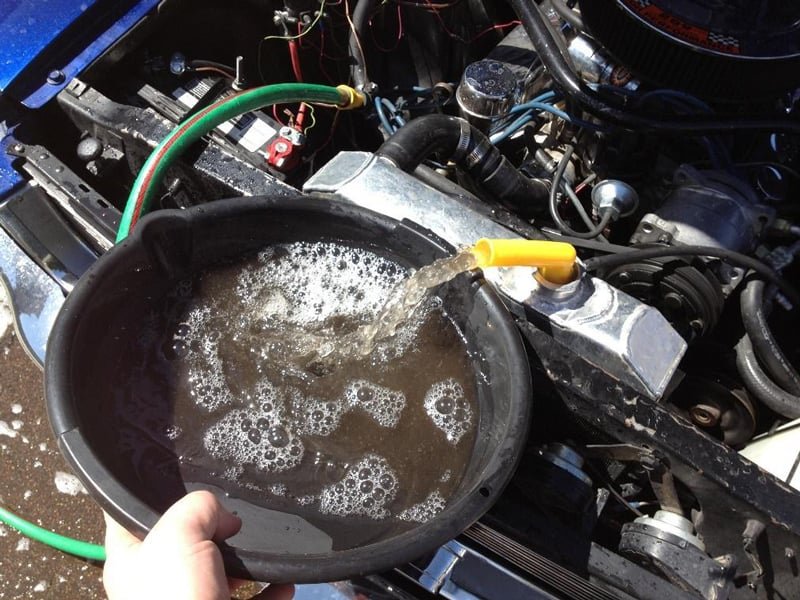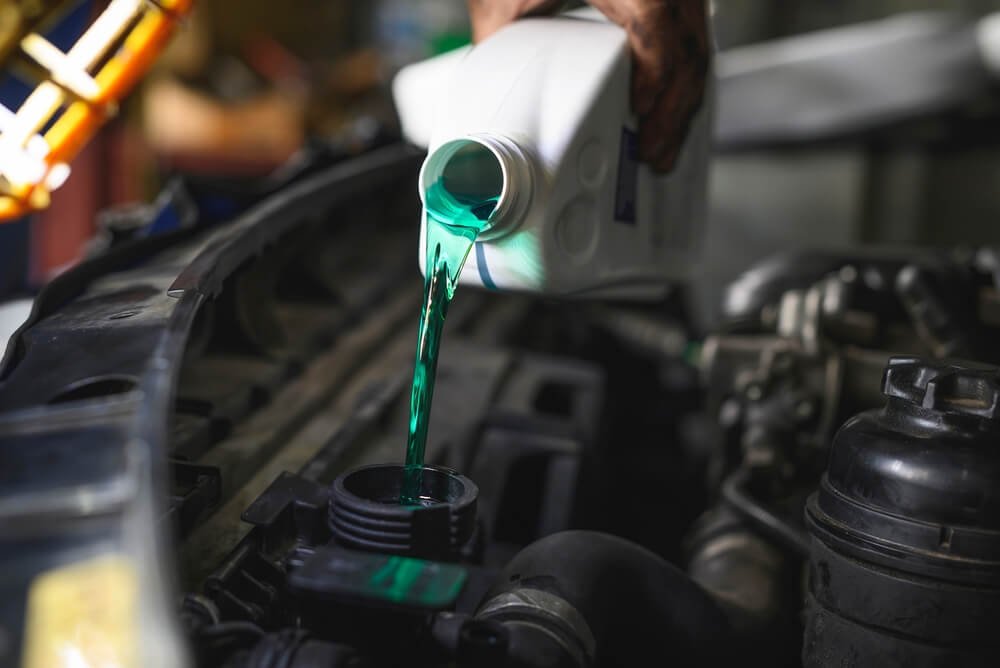Engine coolant flush cost is an important factor when maintaining your vehicle’s cooling system. This service keeps the engine running smoothly, prevents costly repairs, and ensures proper temperature control. A coolant flush removes old fluid, cleans the system, and refills it with fresh coolant. If you’re planning this service in 2025, it’s essential to know the average coolant flush cost and whether to choose a dealership or a local shop. In this article, we compare engine coolant flush costs, highlight dealership vs. local shop differences, and share tips to help you save money.
What is a coolant flush?
An engine coolant flush, more commonly referred to as a radiator flush, or system flush, involves the draining of old coolant, followed by a rinse with specialized systems cleaning liquids, and a fresh refill. Gradually, coolant that’s aged begins to fill up with rust, scaly deposits, and lots of other gunky materials that can severely restrict radiator capacity, destroy the ability to transfer heat, and as a result… overheat and damage the engine.
In this process, technicians will:
- Remove the old coolant from the radiator and engine block.
- Add a specialized flush to the system to dissolve rust and other sediment.
- Remove the flush solution including the dissolved debris.
- Using a flush, refill the system to the manufacturer specifications with new coolant that was mixed prior.
- Inspect the entire system for and bleed any trapped air.
- Completing this service regularly will guarantee that your engine remains effective, and is able to cool appropriately.

Average Engine Coolant Flush Cost in 2025
The engine coolant flush cost varies widely based on where you get it done — dealerships often charge more than local auto shops. On average, you can expect the following price ranges:
| Service Location | Average Coolant Flush Cost |
|---|---|
| Dealership | $180 – $250 |
| Local Repair Shops | $100 – $180 |
| Quick Lube/Chain Shops | $80 – $140 |
Prices at the dealer will typically be higher because of the higher labor rate, and because dealer’s use of OEM (Original Equipment Manufacturer) fluids and procedures. Local garages can be competitive, but they might use generic or aftermarket coolants than can be cheaper.
Dealership vs. Corner Store: What You Are Paying For?
Pricing Difference
Local shops and dealerships differ in more than just service pricing. Unlike local shops, dealerships offer higher, more knowledgeable labor because they have more certified technicians. The dealership’s overhead costs which include specialized money, also drive prices up.
In contrast, local shops are more affordable because they use aftermarket fluids and aftermarket parts which lowers the engine coolant flush cost. Although independent mechanics may provide more flexible service, they tend to have lower service quality.
Quality of Fluid
The dealers often utilizing OEM coolant that meets your manufacturer’s specifications exactly. This means that it’s compatible and will last, but at a premium.
Local stores might have some generic coolant that works in most cars. Although generally safe, mixing coolant types may cause chemical reactions, which will result in gel formation and/or clogging if there is no complete flush.
Service Thoroughness
Many times dealers also do a complete vehicle inspection when they do the coolant flush so they look for related problems that can help prevent future problems. They may also perform any technical service bulletins (TSBs) or vehicle recalls during the visit.
Local stores might not do all of that thorough of a check-up but do perform some basic flushing services.
Convenience and Speed
Dealership service appointments can also be more difficult to book, particularly at top brands or busy locations. Local garages or quick lube chains provide quicker appointments and sometimes same-day service.
When Should You Get an Engine Coolant Flush?
Many car makers recommend a coolant flush every 2 to 5 years, or 30,000 or 50,000 miles, so check your owner’s manual. But check your owner’s manual for precise intervals.
You might require a flush earlier if you experience:
- Engine overheating
- there is a sweet smell and puddles of coolant under the vehicle
- Rusted or dirty coolant in sediment in the reservoir
- Heater not working effectively
If you stay long on the flush, it can elevate corrosion and get your radiator or engine damaged.

Tips to Lower Engine Coolant Flush Cost in 2025
- Get multiple quotes: Prices vary significantly, so compare local shops and dealerships.
- Look for coupons and discounts: Many service centers offer promotions, especially during cooler months.
- Schedule bundled services: Combining coolant flush with oil changes or tire rotations can reduce overall costs.
- Choose trusted local shops: A reliable mechanic with good reviews can offer quality service at lower prices than dealers.
- Avoid unnecessary flushes: Follow your vehicle’s recommended maintenance schedule rather than rushing into premature flushes.
FAQs About Engine Coolant Flush Cost
1. How much does Firestone charge to patch a tire in 2025?
On average, Firestone charges $20–$40 per tire patch. Specialty or run-flat tires may cost $40–$60.
2. Is a coolant flush really necessary?
Yes. Old coolant loses its ability to regulate temperature and prevent corrosion. A flush removes rust, debris, and contaminants, protecting your engine and radiator from overheating and costly damage.
3. How often should you get a coolant flush?
Most manufacturers recommend a flush every 30,000–50,000 miles or every 2–5 years. Check your owner’s manual for exact intervals.
4. What are signs that I need a coolant flush sooner?
Engine overheating
Sweet smell or puddles of coolant under the car
Rusty or dirty coolant in the reservoir
Heater not working properly
5. Why are dealership coolant flushes more expensive?
Dealerships use OEM fluids, have certified technicians, and often include a full vehicle inspection. Local shops are cheaper but may use aftermarket coolant and provide fewer extras.
Final Thoughts
The engine coolant flush cost in 2025 depends largely on your choice between dealership and local repair shops. Dealerships charge a premium for OEM parts, certified technicians, and detailed inspections, often pricing the service between $180 and $250. Meanwhile, local shops offer competitive rates ranging from $100 to $180, with varying coolant quality and service thoroughness.
Whichever option you choose, prioritizing regular coolant flushes is essential for preventing engine overheating and ensuring your vehicle’s long-term reliability. By shopping around and using discounts, you can get high-quality service while keeping your costs reasonable.

[…] radiator flush is a chemical cleaning process, which is usually more expensive than cleaning the radiator, as it […]